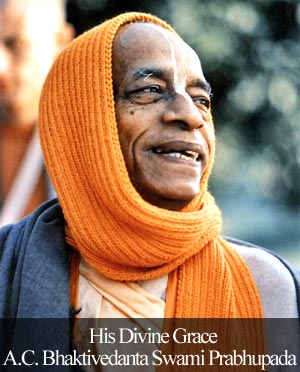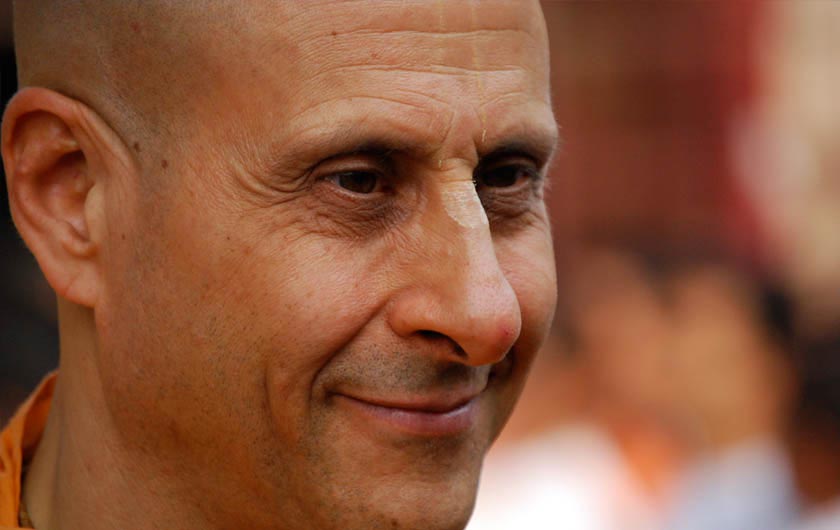
At Mashed, a place of pilgrimage for Shiite Muslims, Richard (now Radhanath Swami) was pleasantly surprised to meet Ibraham, a refined gentleman and so different from the man who had forced Richard to scream the name of God in the teashop at Erzeram. This was a striking lesson for Richard on how every religion has many levels of practitioners and it would be shallow to generalize about an entire religion from a few of its followers.
Ibraham educated Richard on the teachings of Islam at the burial place of the saints Imam Reza and Harun al- Rashid.
Richard was indeed at the heart of a pilgrimage place; the Imam Reza shrine attracts 15 to 20 million pilgrims every year. In my readings of Islam I discovered Harun al-Rashid to be a eighth century saint of Iraq who ruled from 786 to 809. His time was marked by scientific, cultural and religious prosperity for Islam. Art and music also significantly flourished during his reign.
Since Richard was now exposed to the Shia sect of Islam, he dutifully learnt from Ibraham about the basic tenets of Islam. Richard was happy to discover that the basic teachings and essence of all religions were the same. It’s only the narrow minded who cause violence and terror in the name of religion. This holds true for all religions, and the Shiites are no exception. In Islam the Shia and Sunni are the two main sects formed due to a dispute over the right successor to Prophet Mohammed. The Sunni, or followers of the way, followed the caliphate and maintained the premise that any devout Muslim could potentially become the successor to the Prophet if accepted by his peers. The Shia however, maintain that only the person selected by God and announced by the Prophet could become his successor, and thus Imam Ali became the religious authority for the Shia people. Militarily established and holding control over the government, many Sunni rulers perceived the Shia as a threat – both to their political and religious authority.
The Sunni rulers sought to marginalize the Shia minority and later the Abbasid caliphate turned on their Shia allies and further imprisoned, persecuted, and killed Shias. The persecution of Shias throughout history by Sunni co-coreligionists has often been characterized by brutal and genocidal acts. Comprising only around 10-15% of the entire Muslim population, to this day, the Shia remain a marginalized community in many Sunni Arab dominant countries without the rights to practice their religion and organize.
In Saudi Arabia, Shiites constitute 15 to 20% of the population but have no equal rights as other Sunni Muslims. There have been no Shia cabinet ministers. They are kept out of critical jobs in the armed forces and the security services. There are no Shia mayors or police chiefs, and not one of the three hundred Shia schools in the country has a Shia principal. The government has also restricted the names that Shias can use for their children in an attempt to discourage them from showing their identity. Saudi textbooks, criticized for their anti-Semitism, are equally hostile to Shiism often characterizing the faith as a form of heresy worse than Christianity and Judaism. Teachers frequently tell classrooms full of young Shia schoolchildren that they are heretics.
I am inspired by Radhanath Swami’s refusal to subscribe to any of these extremist view-points. He is accommodating and loving to people of all religious sects, and seeks to see the sincerity of the practitioner in approaching God. The external designation is immaterial, says Radhanath Swami, “when the heart has love, God reciprocates, irrespective of the colour of your skin and the nature of your religion.”
 Table of Contents
Table of Contents

 Founder-acharya of the International Society For Krishna Consciousness (ISKCON)
Founder-acharya of the International Society For Krishna Consciousness (ISKCON) “Go to India” a sweet but commanding voice; spoke up in the heart of young Richard (later Radhanath Swami) who was immersed in meditation, his search for meaning in life has brought him to the Isle of Crete. Today he was ordered to go to India. Born and raised in the middle class suburbs of Chicago, Radhanath swami grew up in the 1950’s and 60’s era when popular musicians protested war, prejudice and social injustice. Radhanath swami would listen to these songs again and again, but their lyrics referring to God stirred his soul. Peter, Paul and Mary- the folk trio from Greenswich village sang in their debut album
“Early in the morning, about the break of day
I ask the Lord, to help me find my way”
This simple prayer was to guide Radhanath swami in the coming years of his life........
“Go to India” a sweet but commanding voice; spoke up in the heart of young Richard (later Radhanath Swami) who was immersed in meditation, his search for meaning in life has brought him to the Isle of Crete. Today he was ordered to go to India. Born and raised in the middle class suburbs of Chicago, Radhanath swami grew up in the 1950’s and 60’s era when popular musicians protested war, prejudice and social injustice. Radhanath swami would listen to these songs again and again, but their lyrics referring to God stirred his soul. Peter, Paul and Mary- the folk trio from Greenswich village sang in their debut album
“Early in the morning, about the break of day
I ask the Lord, to help me find my way”
This simple prayer was to guide Radhanath swami in the coming years of his life........
No religion advocates voilence,hate,crime and other things which are not harmonious with teachings of the Supreme beings.It is our conditioned state in this world makes all diffrence.Therefore Srila Prabhupad and his beloved deciples always talk about re-establishing our lost connection with that Supreme Being.In this way clash of false ego and subsequent disaster can be avoided.Thank you very much for sharing with us.
View CommentThank you very much for sharing with us.
View Commentits great how maharaj teaches subtle principles by day to day examples
View CommentI am inspired by Radhanath Swami’s refusal to subscribe to any of these extremist view-points. He is accommodating and loving to people of all religious sects, and seeks to see the sincerity of the practitioner in approaching God.
View Commentwonderful insight by HHRNSM
View CommentRadhanath Swami doesn’t like to judge others and here is one of the incident where he did not judge his friend Ibraham for being in a different religion than his own, and label him as an extremist.
View Comment